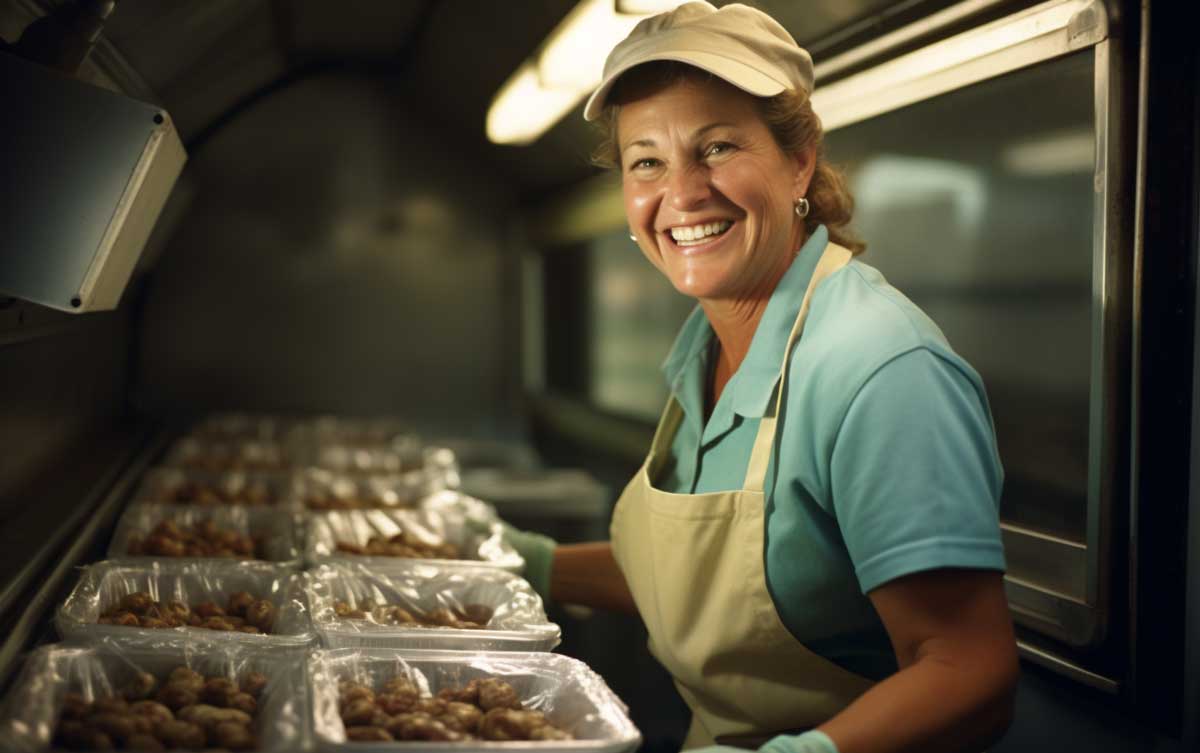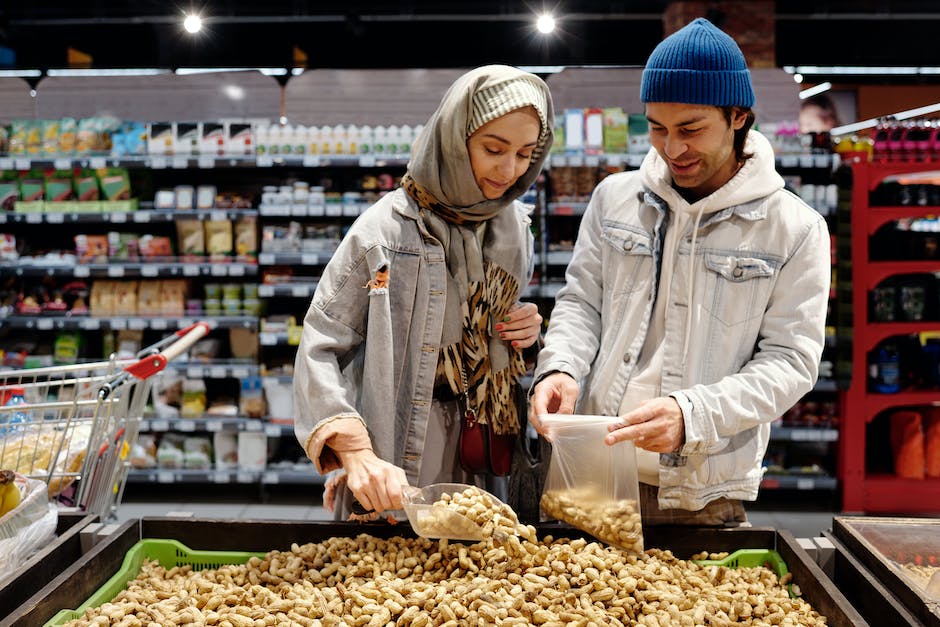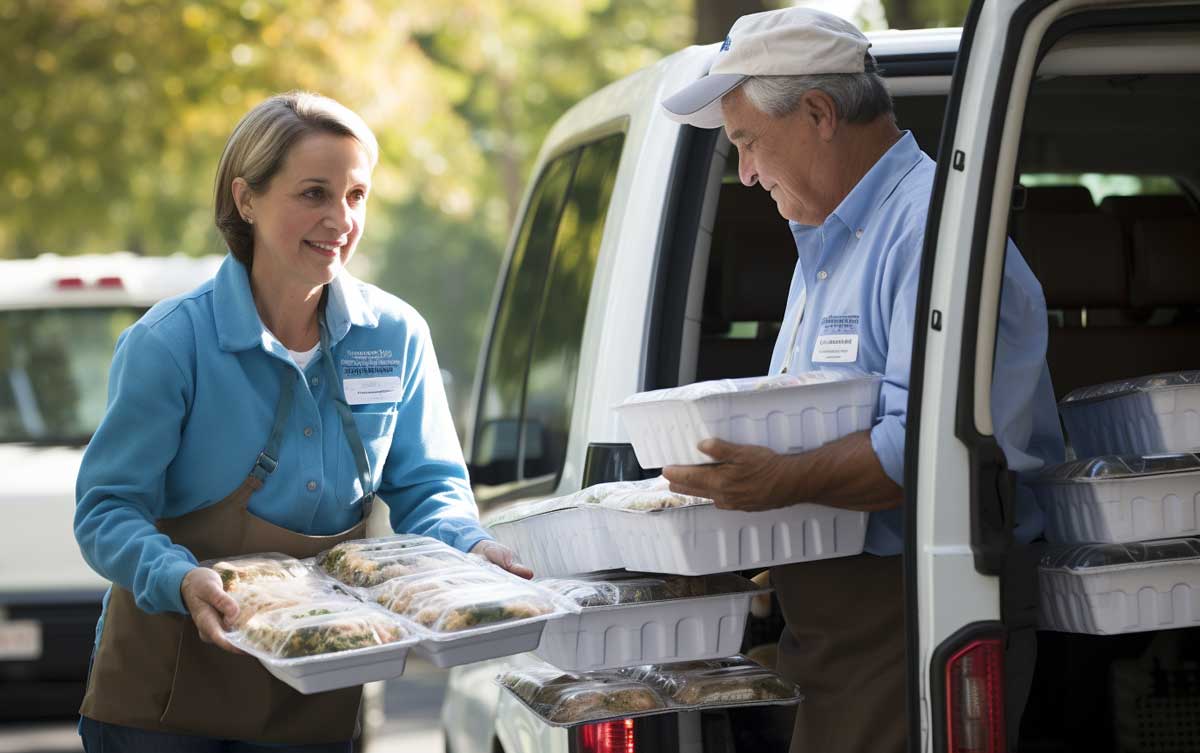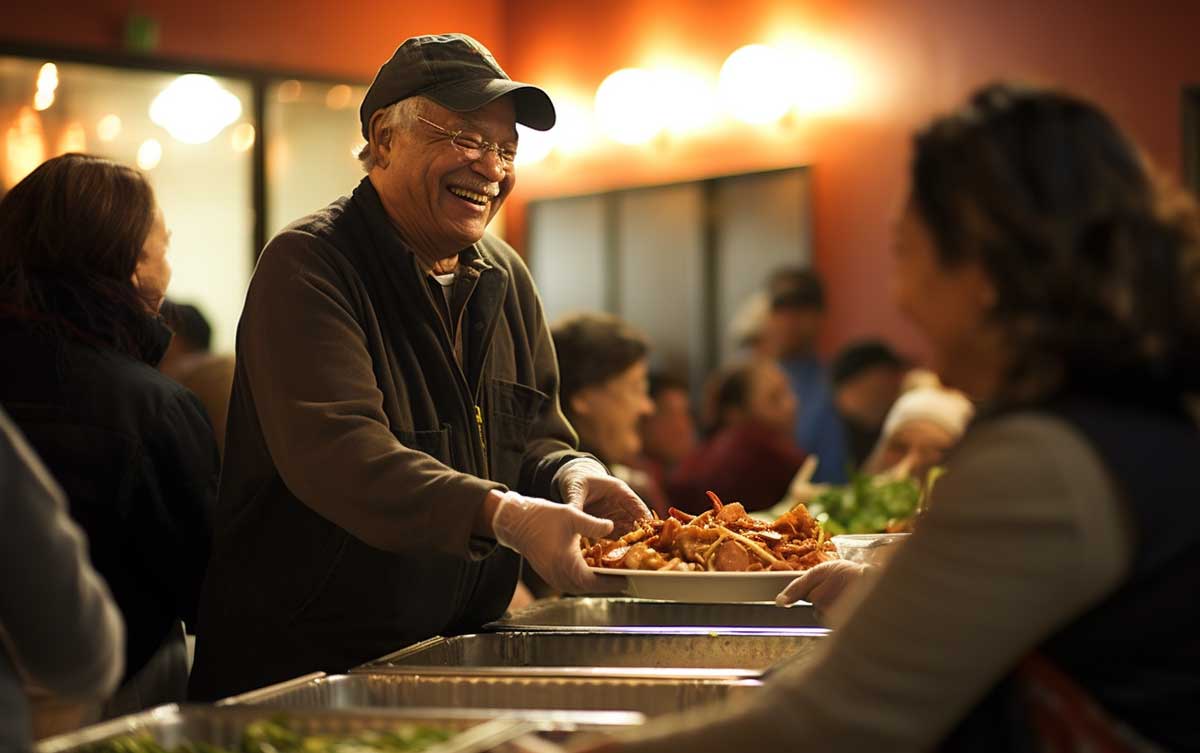The challenge of food insecurity remains a pressing concern for many communities. Food banks and pantries have emerged as pivotal institutions, addressing this issue head-on and ensuring that every individual has access to nutritious meals. These establishments, however, do more than just fill empty stomachs. They foster community cohesion, promote health and well-being, and serve as a testament to the power of collective action. Dive into this comprehensive exploration of the role, operations, and profound impact of food banks and pantries on our communities and the broader societal landscape.
This guide explain what is a food pantry. Explores the impact of food banks and pantries on society and communities. From alleviating hunger to fostering community cohesion, discover how these establishments are reshaping the fight against food insecurity.
What Is A Food Pantry?
A food pantry is a community-based program designed to provide hungry individuals and families with food assistance. Unlike soup kitchens, which provide hot meals on the premises, food pantries distribute bags or boxes of food items that recipients can take home and prepare. These establishments often operate as non-profit organizations, relying on donations from the community, local businesses, and larger food banks. They serve as a lifeline for many, ensuring that no one goes to bed hungry.
The Benefits Of Food Pantries
Food pantries offer a myriad of benefits, not only to the individuals and families they serve but also to the broader community. Here are some of the most significant advantages:
-
Alleviating Hunger: The primary purpose of food pantries is to combat hunger. By providing essential food items, they ensure that individuals and families have enough to eat, especially during challenging times.
-
Promoting Health: By offering nutritious food options, food pantries help promote better health among the community. A balanced diet is crucial for physical and mental well-being, and by providing such foods, pantries play a role in preventing malnutrition and related health issues.
-
Supporting Families: Many families, especially those with children, rely on food pantries during tough economic times. These establishments ensure that children receive the necessary nutrients for growth and development.
-
Reducing Waste: Food pantries often receive donations from supermarkets and local businesses. These are items that might otherwise go to waste. By redistributing them, pantries play a part in reducing food waste.
-
Strengthening Communities: Food pantries often become community hubs, places where individuals come together for a common cause. They foster a sense of unity and purpose, strengthening the bonds within a community.
Types Of Food Pantries
There are several types of food pantries, each designed to meet specific community needs:
-
Emergency Food Pantries: These are set up to provide immediate food assistance, especially during disasters or unforeseen circumstances.
-
Mobile Food Pantries: These are trucks or vans that travel to different locations, ensuring that even remote or underserved areas have access to food.
-
College Campus Pantries: Recognizing that many college students struggle with food insecurity, some institutions have set up pantries to support their student population.
-
Residential Pantries: These are established in residential areas, often in apartment complexes, ensuring that residents have easy access to food assistance.
Impact On Society
The presence of food pantries has a profound impact on society:
-
Economic Impact: By providing food assistance, pantries help families save money, which can then be used for other essential expenses like rent, utilities, and medical bills.
-
Social Cohesion: Food pantries bring people from various backgrounds together, fostering a sense of community and mutual support.
-
Awareness And Advocacy: The existence of food pantries highlights the issue of food insecurity, prompting discussions and actions at the policy level.
-
Volunteer Opportunities: Many pantries rely on volunteers for their operations, providing individuals with a chance to give back to their communities.
Types Of Food Pantries
Food pantries are essential establishments that provide food assistance to those in need. They come in various forms, each designed to address specific challenges and cater to different communities. Here's a deeper look into the different types of food pantries:
Local Food Banks
A food bank is a non-profit organization that stores vast amounts of food to be distributed to local food programs, such as food pantries. These establishments can vary in size, with some being as large as wholesale clubs. The food stored in these banks is often donated by local residents, retailers, grocery stores, and restaurants. Additionally, organizations like Feeding America assist in connecting these banks with additional food resources.
To ensure the food reaches the community, food banks employ drivers to make deliveries. Each food bank caters to a specific area, which can range in size. For instance, while Feeding San Diego serves a densely populated urban county, St. Mary’s Food Bank Alliance in Phoenix caters to multiple counties, requiring extensive travel to ensure food delivery. Regardless of their operational scale, every food bank is dedicated to eradicating hunger within their jurisdiction.
Soup Kitchens
While not mentioned in the provided content, soup kitchens are establishments that offer prepared meals to the hungry, usually for free or at a very low cost. Unlike food pantries that distribute food items for home preparation, soup kitchens serve hot meals on-site, ensuring immediate hunger relief.
Mobile Food Pantries
Mobile food pantries are essentially pantries on wheels. They are designed to overcome barriers like limited mobility among seniors or transportation challenges in rural areas. These mobile units distribute food either in pre-packed boxes or set up like a farmer's market, allowing individuals to pick what they need. An example is Island Harvest, a food bank on Long Island, NY, which operates a senior mobile pantry to distribute excess food and grocery items to the elderly in the community.
Community Centers And Meal Programs
Community centers often serve as hubs for various activities, including meal programs. These centers might collaborate with local food banks and pantries to provide regular meals or food items to community members. The advantage of such centers is their accessibility and familiarity among locals, making them an ideal point for food distribution.
Moreover, some community centers might have specialized programs targeting specific groups. For instance, recognizing the challenges faced by students, some centers might have programs specifically for them, ensuring they receive nutritious meals and snacks.
How Do Food Pantries Work?
Food pantries play a pivotal role in addressing food insecurity in communities across the nation. They serve as distribution points, ensuring that those in need have access to essential food items. But how do these establishments operate? Let's delve into the mechanics behind food pantries and their associated entities.
Partner Agencies And Distribution Centers
Food pantries often collaborate with larger entities known as food banks. A food bank is a non-profit organization dedicated to collecting and distributing food to various hunger-relief charities and community organizations, including food pantries, soup kitchens, and shelters. These banks work closely with local grocery stores, restaurants, and other food donors to gather surplus food that might otherwise be wasted.
The role of a food bank is akin to a warehouse, storing millions of pounds of food and other products ready for distribution. These banks can vary in size and capacity. Some cater to vast urban areas, distributing millions of pounds of food annually, while others might serve smaller rural communities. Regardless of their size, all food banks depend on the generosity of donors and the dedication of volunteers to fulfill their mission.
Money For Food & Fresh Produce
While food donations form the backbone of food pantry supplies, monetary donations are equally crucial. With financial contributions, pantries can purchase fresh produce and other essential items that might not be readily available through donations. This ensures a balanced and nutritious offering for those they serve. Additionally, having funds allows pantries to buy in bulk, often at discounted rates, ensuring they get the best value for their money and can serve more people.
Grocery Stores & Other Resources For Food Insecure People
Grocery stores play a significant role in the food pantry ecosystem. Many stores have established partnerships with local food banks and pantries, donating surplus items that might not be saleable but are still fit for consumption. This not only reduces food waste but also ensures that a wider variety of food items reach those in need.
Apart from grocery stores, there are other resources available for food-insecure individuals and families. Some pantries collaborate with local farmers and markets to source fresh produce. Community gardens, where locals can grow their own produce, also contribute to the food supply for some pantries.
The Impact On Our Society & Communities
Food pantries and banks have become cornerstones in many communities, providing essential services that go beyond merely filling empty stomachs. Their impact resonates on multiple levels, from addressing immediate hunger needs to fostering community cohesion and promoting better health outcomes.
Fighting Hunger & Improving Nutrition
“Food brings people together on many levels,” says chef Giada De Laurentiis. “It’s nourishment of the soul and body; it’s truly love.” This sentiment is echoed in the operations of food banks and pantries across the nation. Their primary mission is to alleviate hunger, and they do so by distributing millions of meals to those in need.
Food Distribution: One of the primary roles of food banks is to ensure that food reaches those who need it most. With extensive distribution networks, these organizations hold distributions at various sites, including community centers, schools, and other public spaces. For instance, the SLO Food Bank holds over 75 distributions per month at more than 50 locations, ensuring that even those in remote areas or facing mobility challenges can access food.
Food Rescue: Beyond just collecting and distributing food, many food banks engage in food rescue operations. This involves gleaning produce from farms, farmers markets, and even local backyards and gardens. Such initiatives not only prevent food wastage but also ensure that fresh, nutritious produce reaches those who might otherwise not have access to it.
Community Outreach & Partnerships: Food banks often extend their services beyond food distribution. They engage in community outreach, hosting events like farmers markets, and provide nutrition education. These initiatives raise awareness about the importance of a balanced diet, food budgeting, and available food assistance resources.
Nutritional Support: Access to nutritious food is a fundamental right. Food banks, recognizing the importance of nutrition, often structure their programs to ensure that fresh produce is accessible and affordable for all. They also promote food assistance programs and ensure that even those in the most remote areas, where grocery stores might be miles away, have access to wholesome food.
Community Cohesion: Beyond the tangible benefits of food distribution and nutrition education, food banks play a vital role in fostering community cohesion. They bring people together, be it through community events, volunteer opportunities, or the simple act of sharing a meal. As the SLO Food Bank aptly puts it, the sharing of meals has always been a powerful tool for community building, and food banks are proud to continue this tradition.
Frequently Asked Questions
To help you better understand what is a food pantry, we've answered some of the most frequently asked questions.
What is the primary difference between a food bank and a food pantry?
A food bank is a large-scale non-profit organization that collects and stores vast amounts of food, distributing it to various local programs like food pantries. In contrast, a food pantry is a direct point of distribution where individuals and families can receive food items.
How do food banks source their food?
Food banks collaborate with local grocery stores, restaurants, farms, and individual donors to gather surplus food. They also engage in food rescue operations, gleaning produce from various sources that might otherwise go to waste.
Are all food items at a food pantry free?
While most food pantries offer food items for free, some might have a minimal cost or suggest a donation. It's always best to check with the specific pantry regarding their policies.
How can I support my local food pantry or bank?
Support can come in various forms, from monetary donations to volunteering your time. Donating non-perishable food items, especially during food drives, is also a great way to help.
Why is nutrition education a part of some food bank programs?
Nutrition education ensures that recipients not only get food but also understand the importance of a balanced diet. It empowers individuals to make healthier food choices, leading to better overall health outcomes.
What are food deserts, and how do food banks help address them?
Food deserts are areas where residents have limited access to affordable and nutritious food options. Food banks help address this by holding distributions in such areas, ensuring that even those in remote or underserved regions have access to wholesome food.
Fighting Food Insecurity With Food Pantries
So, what is a food pantry? Food banks and pantries stand as beacons of hope and community resilience. Their multifaceted approach, from direct food distribution to community outreach and nutrition education, ensures that no one is left behind. As we reflect on their significance, it's evident that these establishments are more than just food distribution points. They are hubs of community engagement, education, and support. By understanding their operations and impact, we can better appreciate the essential role they play in building healthier, stronger, and more cohesive communities.
Discover more food assistance programs by reading our comprehensive guide to obtaining free food boxes for seniors near you. Visit Gov Relations to find more information and browse through the available resources.







